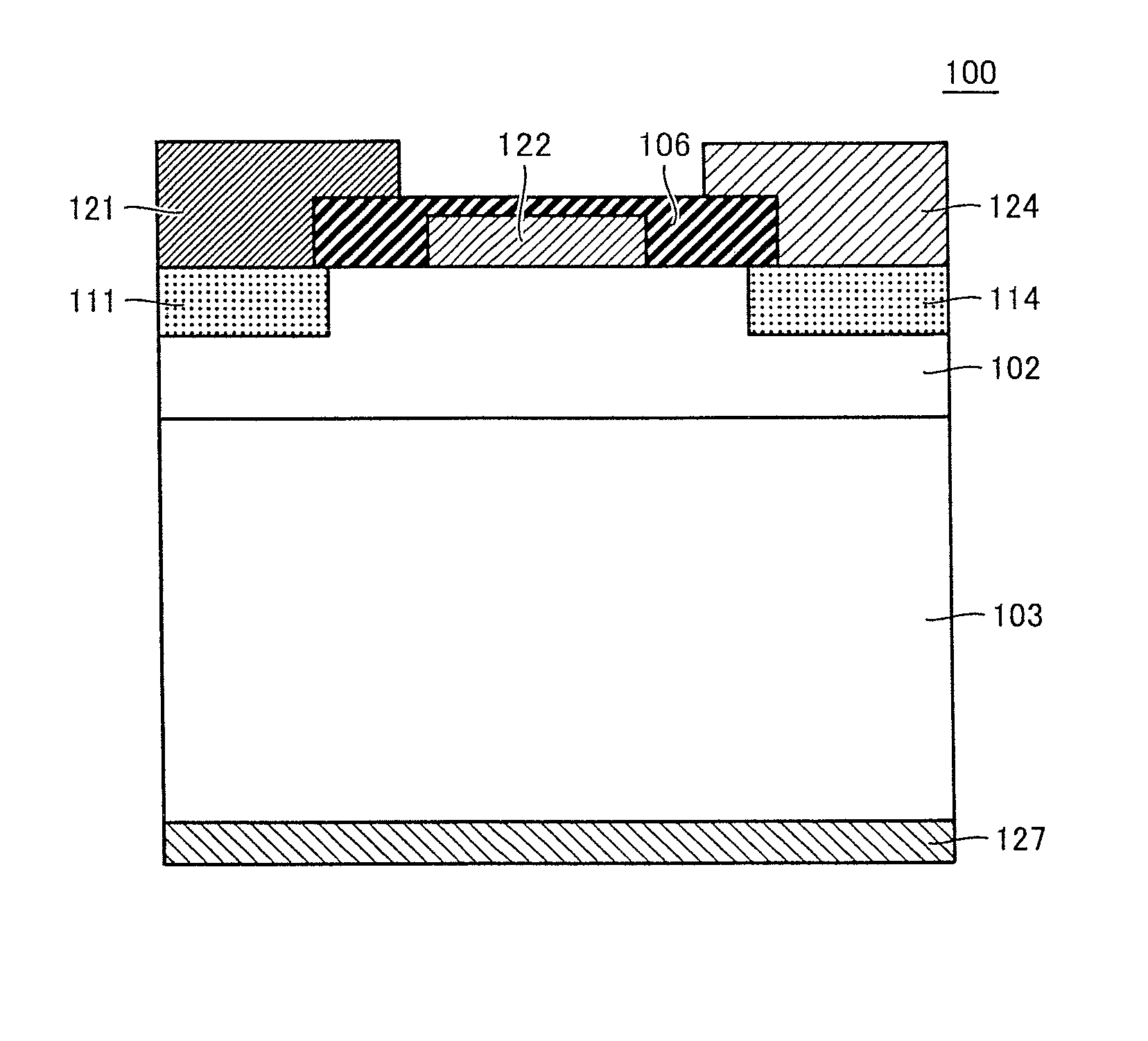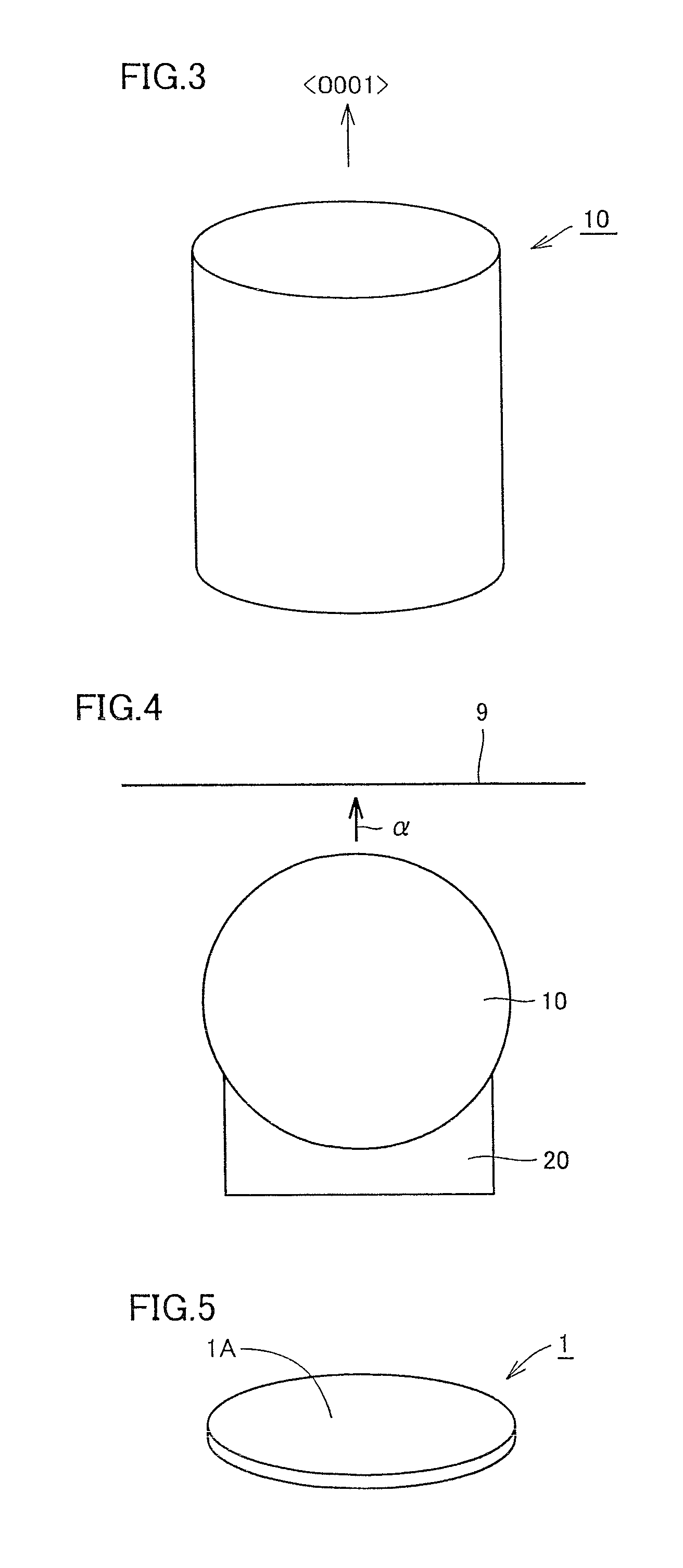Silicon carbide substrate, semiconductor device, and methods for manufacturing them
a technology of silicon carbide substrate and semiconductor device, which is applied in the direction of polycrystalline material growth, crystal growth process, chemistry apparatus and processes, etc., can solve the problems of deterioration of the characteristics inhibiting epitaxial growth, and deteriorating quality of the epitaxial layer grown by lattice matching with the substrate, so as to improve the manufacturing efficiency of the semiconductor device, reduce the effect of manufacturing cost and improving productivity
- Summary
- Abstract
- Description
- Claims
- Application Information
AI Technical Summary
Benefits of technology
Problems solved by technology
Method used
Image
Examples
first embodiment
[0051]First, a silicon carbide substrate as one embodiment of the present invention will be described. Referring to FIG. 1, a silicon carbide substrate 1 in the present embodiment is entirely made of single-crystal silicon carbide, and has a first main surface 1A and a second main surface 1B opposite to the first main surface. In at least one main surface of first and second main surfaces 1A and 1B (for example, first main surface 1A), sulfur atoms are present at not less than 60×1010 atoms / cm2 and not more than 2000×1010 atoms / cm2, and carbon atoms as an impurity are present at not less than 3 at % and not more than 25 at %.
[0052]Since the presence ratio of the sulfur atoms is not less than 60×1010 atoms / cm2 and the presence ratio of the carbon atoms as the impurity is not less than 3 at %, the silicon carbide substrate has a stabilized surface. In addition, since the presence ratio of the sulfur atoms is not more than 2000×1010 atoms / cm2 and the presence ratio of the carbon atoms ...
second embodiment
[0088]Next, a silicon carbide substrate in a second embodiment will be described. Referring to FIG. 8, silicon carbide substrate 1 in the second embodiment basically has the same structure and exhibits the same effect as those of silicon carbide substrate 1 in the first embodiment. However, silicon carbide substrate 1 in the second embodiment is different from that in the first embodiment in that it includes a base layer 11 and a single-crystal silicon carbide layer 12.
[0089]Specifically, referring to FIG. 8, silicon carbide substrate 1 in the second embodiment includes base layer 11, and single-crystal silicon carbide layer 12 formed on base layer 11. Further, a main surface 12A of single-crystal silicon carbide layer 12 on a side opposite to a side facing base layer 11 corresponds to main surface 1A in the first embodiment. That is, in silicon carbide substrate 1 in the present embodiment, a region including one main surface 12A is made of single-crystal silicon carbide. The prese...
example 1
[0096]An experiment was conducted to investigate the influence of the presence ratios of sulfur atoms and carbon atoms as an impurity in a main surface of a silicon carbide substrate on yield of a semiconductor device.
[0097]A silicon carbide single crystal was grown by the sublimation method. Silicon carbide substrate 1 with a diameter of 80 mm was used as a seed substrate. The seed substrate had a main surface corresponding to a (0001) plane. A grown surface, an underlying substrate surface, and an outer periphery of the silicon carbide single crystal were ground with an outer periphery grinding machine to obtain an ingot of the silicon carbide single crystal. Slicing of the ingot was performed using a multiwire saw. The ingot was cut such that a main surface of sliced silicon carbide substrate 1 (hereinafter also referred to as a surface) would serve as a surface that was 4° off from the (0001) plane. Sliced silicon carbide substrate 1 had a thickness of 400 μm. Silicon carbide su...
PUM
| Property | Measurement | Unit |
|---|---|---|
| surface roughness | aaaaa | aaaaa |
| diameter | aaaaa | aaaaa |
| diameter | aaaaa | aaaaa |
Abstract
Description
Claims
Application Information
 Login to View More
Login to View More - R&D
- Intellectual Property
- Life Sciences
- Materials
- Tech Scout
- Unparalleled Data Quality
- Higher Quality Content
- 60% Fewer Hallucinations
Browse by: Latest US Patents, China's latest patents, Technical Efficacy Thesaurus, Application Domain, Technology Topic, Popular Technical Reports.
© 2025 PatSnap. All rights reserved.Legal|Privacy policy|Modern Slavery Act Transparency Statement|Sitemap|About US| Contact US: help@patsnap.com



